Networks go ‘quick and dirty’ to show document after release of Trump affidavit
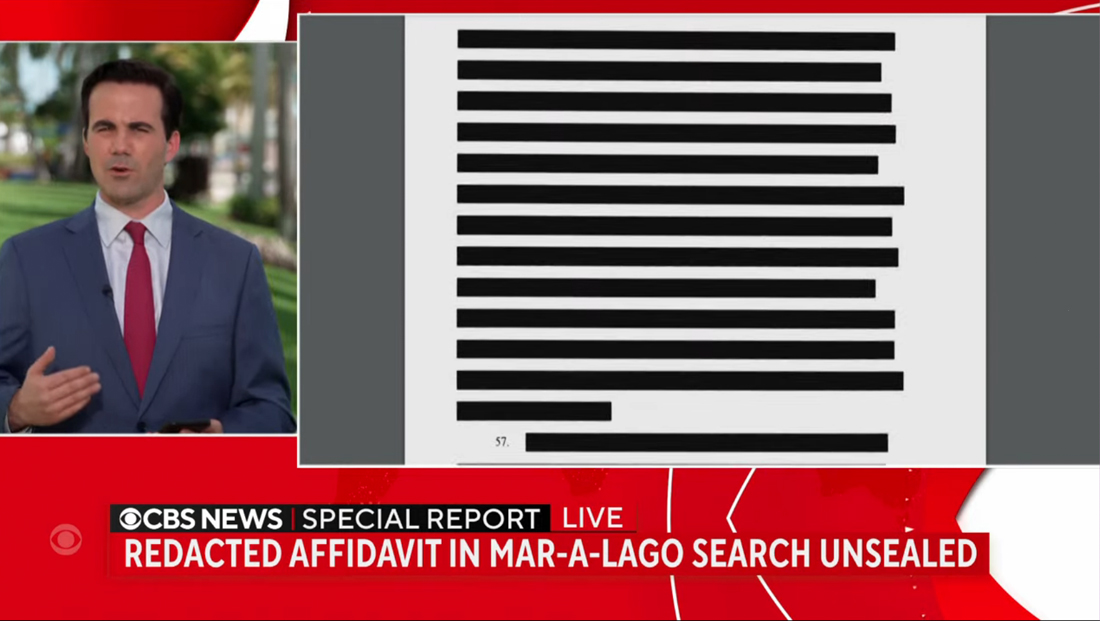
Subscribe to NCS for the latest news, project case studies and product announcements in broadcast technology, creative design and engineering delivered to your inbox.
Shortly after noon eastern time on Aug. 26, 2022, all of the big three networks broke into programming to cover what was revealed by the release of the affidavit that triggered the FBI search of Donald Trump’s Mar-A-Lago estate earlier in the month — a challenge because they were distilling the information largely in realtime.
Teams of newsroom staffers were working behind the scenes to read the document and distill the important facts that were, in turn, conveyed on air.
It’s common for news organizations to divide up the document into sections and have different people assigned to read and analyze each one, with key points highlighted and passed along in the editorial workflow to be made into graphics or mentioned by talent on air.
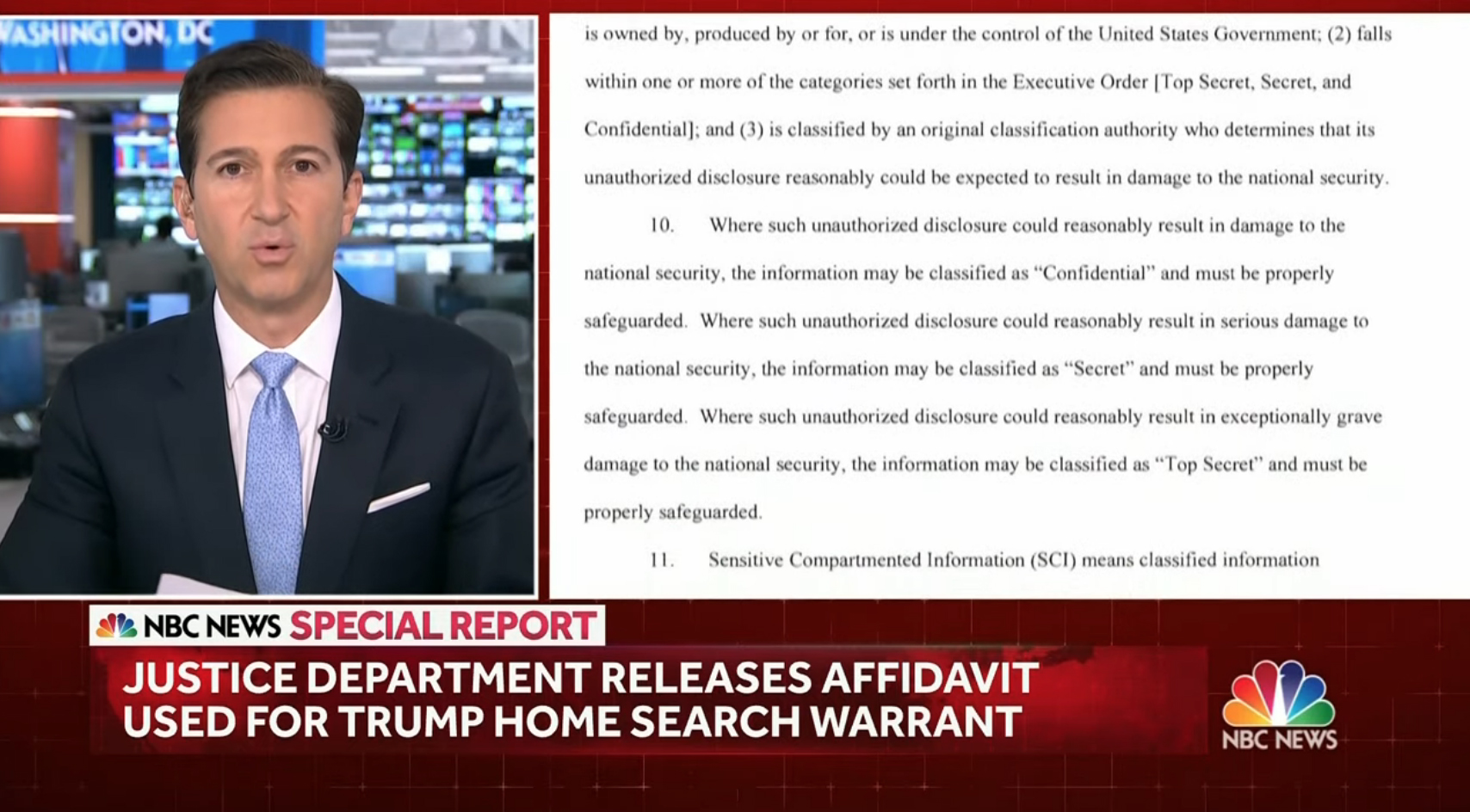
In the early portion of the special reports, a common technique was to punch up a feed of a screen scrolling through the various pages of the file that was released.
During these appearances, there wasn’t really any rhyme or reason to what was being shown on screen — but as a visual it did drive home the point that the document was being read and analyzed in realtime while also showing snippets of text and the amount of content that had to be redacted, as indicated by the black rectangles covering text and images.
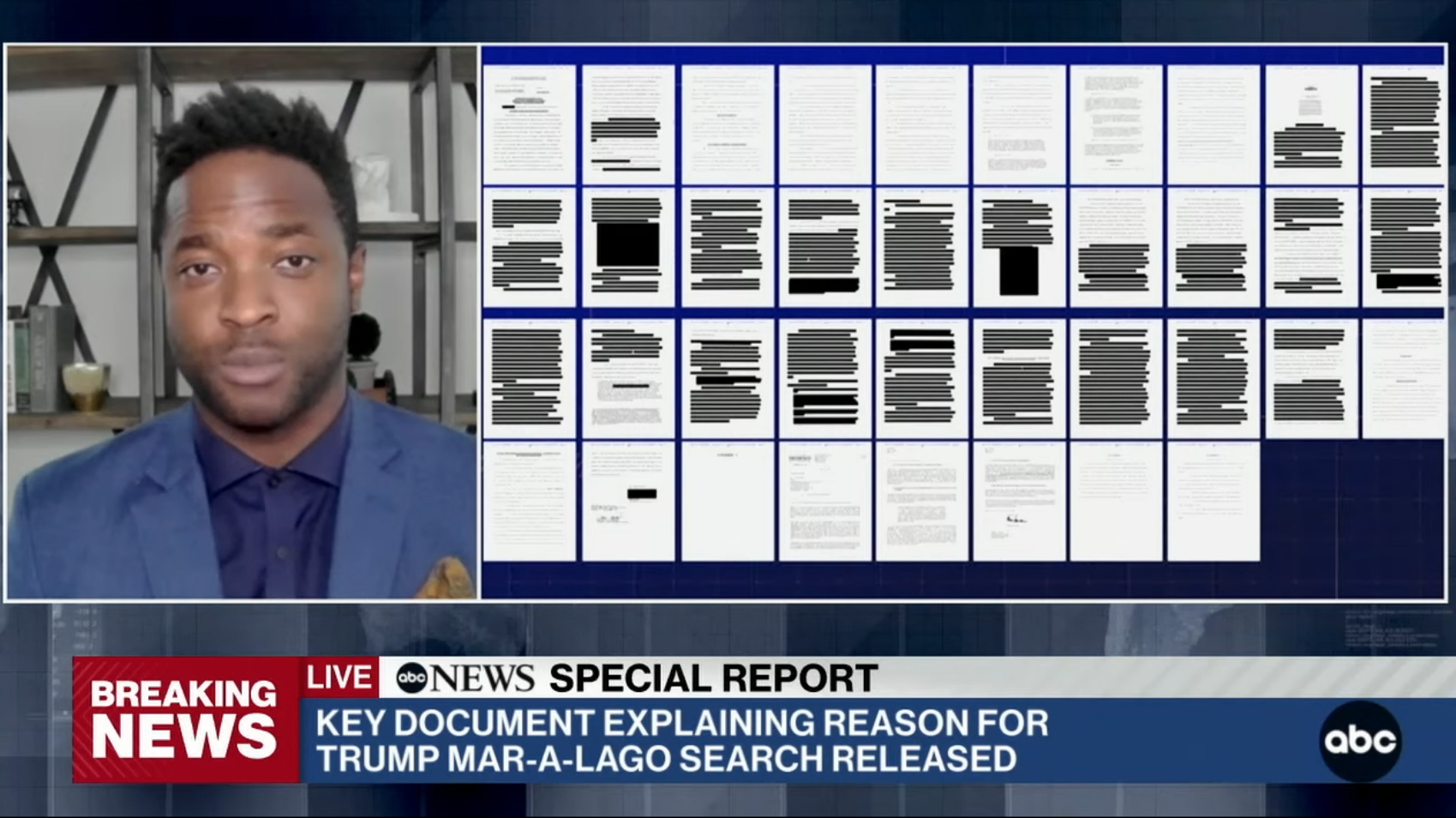
Other approaches included showing a thumbnail style view of the document, which emphasized the amount of redaction that was done.
Some networks used a boxed layout to feature talent on one side with a live feed from a computer that was being controlled by a staffer — typically scrolling through the file.
This has been a common practice on TV news since the early days of more advanced computers being used, especially Internet-connected ones. Some broadcasters use the approach in segments teasing their own sites or as a quick way to show information that’s available on the web, such as the document released Aug. 26.
As time went on, anchors, correspondents and analysts began to read direct quotes from the document from printed copies that were delivered to the set, presumably after being hastily printed off.
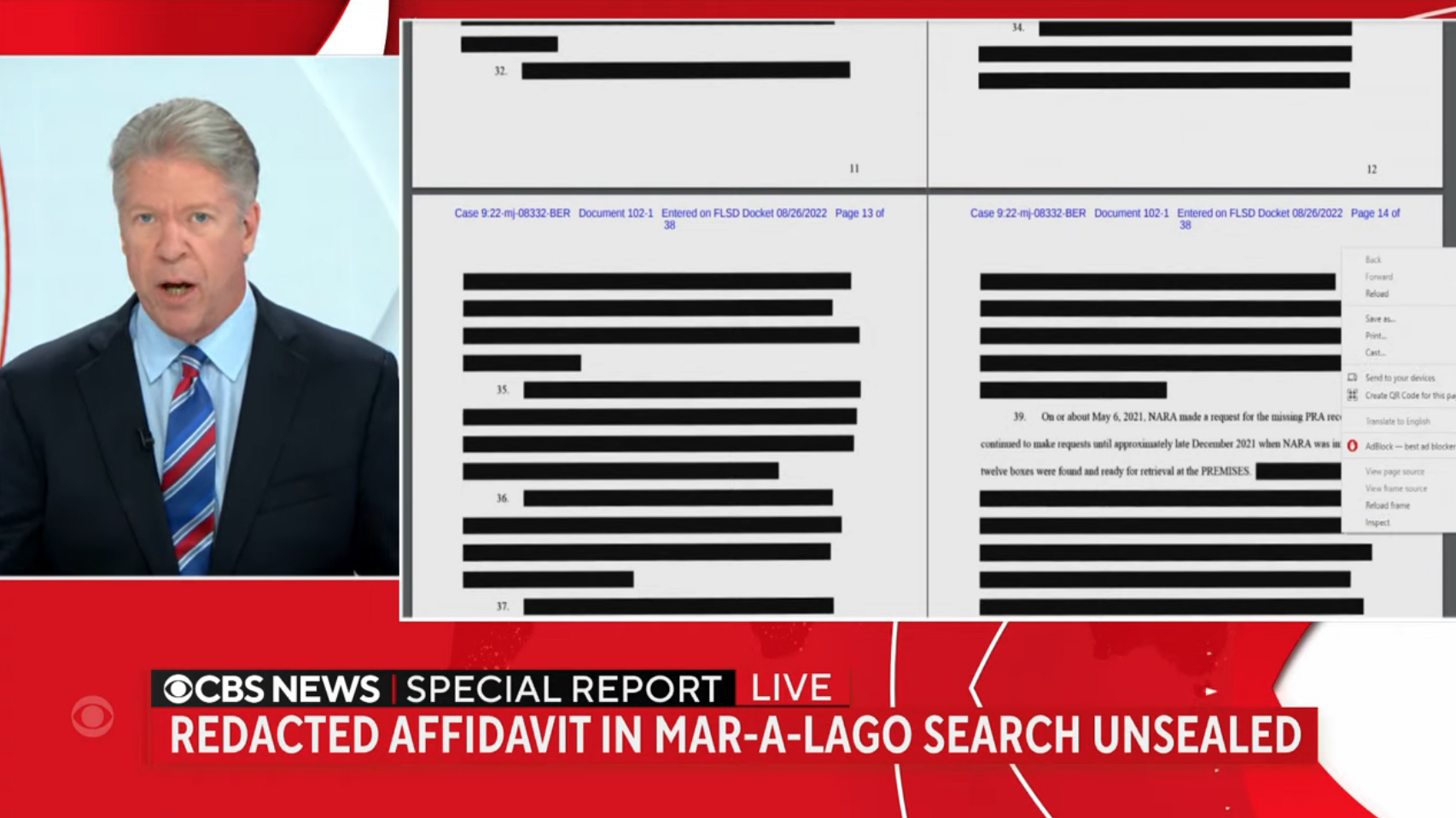
At one point, whoever was running the device feeding CBS’s digital look at the document appeared to accidentally right click inside the web browser window, triggering a contextual menu to appear on screen briefly.
The feed also revealed that the device providing the feed has an ad blocker installed on it — sometimes that the management of many news organizations despise since it cuts down on ad revenue. It was not immediately clear if the blocker was active.
It is understandable, however, that there would be an ad blocker installed on a device designated as providing a live feed from its screen for instances like this given that having web pages show obtrusive ads. However, assuming the blocker is active, it could also cause blank spots on pages being shown and trigger modal windows requesting that the blocker be disabled so that the site can receive its ad revenue.
Meanwhile, NBC had “NBC Nightly News” anchor Lester Holt at the primary anchor desk in Studio 1A with a red world map background shown on the vertical LED video panel that’s normally framed between two anchors in a two-shot. This meant that live views from the studio windows were visible on either side of the shot.
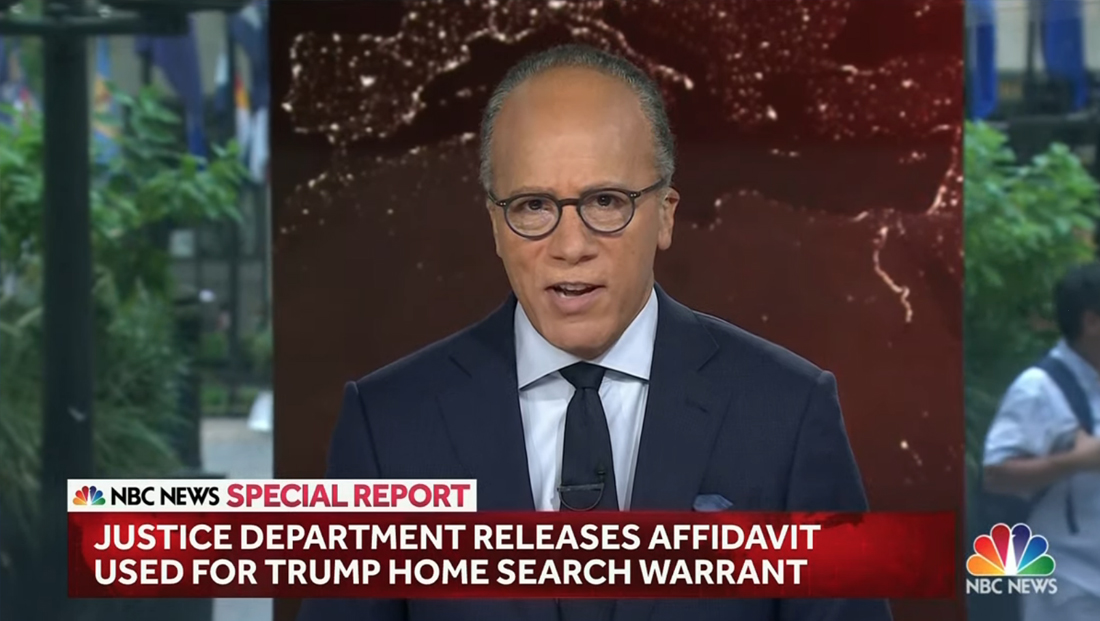
The graphic came across as a bit muddy on air — more of a maroon or even brown than red. It’s also likely that if one wasn’t familiar with the world map element in the network’s special report look that it might not be evident was the background was supposed to be.
In the past, Holt has anchored special reports from this position but with the LED panel placed over his shoulder with the “Special Report” logotype displayed along with a more vibrant red graphic. Other instances have included using video walls that do not show the exterior view.
The design did not use the grid-line motif that’s found in other parts of the look.

Holt, who was the only one of the primary big three network anchors to helm the report (Witt Johnson handled ABC’s and Major Garrett was on CBS), also had an in-studio guest who was seated at the anchor desk.
The two appeared to be seated at a “normal” distance — as opposed to the spaced out social distancing that’s become common over the past two years.
The guest’s one-shot was framed against one of the vertical LED panels with curved white surround that was added in a 2021 renovation. This too appeared to be sporting a special-report themed background, but it was also muddy and out of focus.
It also appeared that the adjacent LED video wall that covers a portion of the studio’s windows was showing some kind of matching look with animation, but it was never shown fully on-screen so it’s not clear what was on it.
Subscribe to NCS for the latest news, project case studies and product announcements in broadcast technology, creative design and engineering delivered to your inbox.





tags
ABC, ABC News, CBS, CBS News, NBC, NBC News, special report, Studio 1A Rockefeller Center
categories
Broadcast Industry News, Featured, Network Special Reports